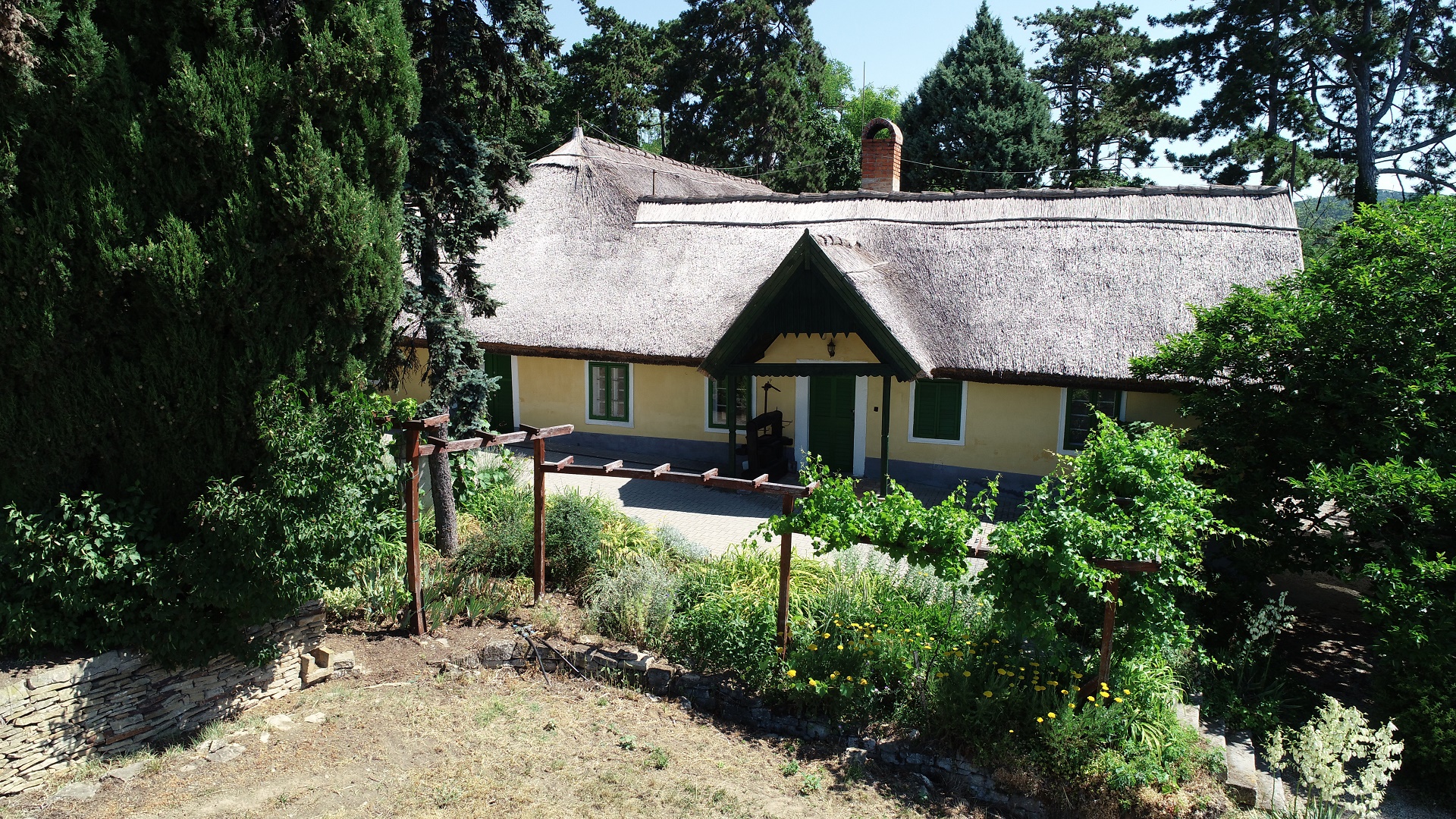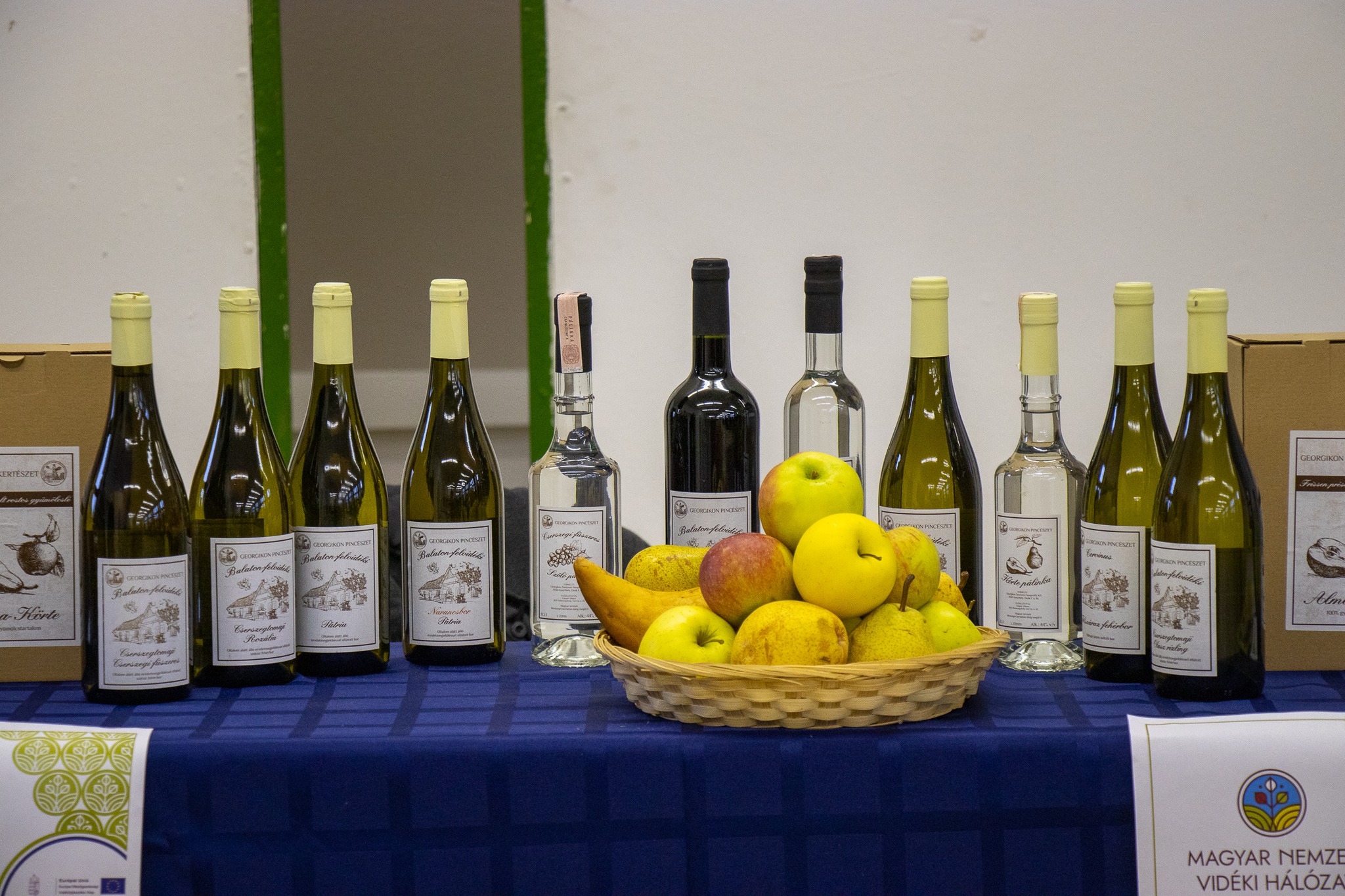Georgikon Viticulture and Oenology Experimental Center Cserszegtomaj - Georgikon Campus - EN
Georgikon Viticulture and Oenology Experimental Center Cserszegtomaj
Georgikon Viticulture and Oenology Experimental Center Cserszegtomaj
Last modified: 27. February 2023
The Georgikon of Keszthely – thanks to its legal predecessors – is the oldest continuously operating agricultural higher educational institution of Europe. It started its operation on 1 July 1797 and was named – on the proposal of the Czech Károly Bulla – after count György Festetics, founder of the institution and after the edificatory poems of Virgil.
After the Agricultural Academy of Keszthely became university, the Department of Horticulture was established under the leadership of Árpád Jeszenszky. After founding the department, beside the theoretical and practical education, comprehensive research work began.

The history of education and research of viticulture dates back to about 220 years before, Georgikon is the oldest viticultural educational and research institution of Hungary. Since 1797, big emphasis has been put on horticulture, viticulture and oenology (Bakonyi-Kocsis, 2006). During the fifty years that has passed since the founding of the Department of Horticulture, breeding grapes and producing new varieties, clones and adulterants became the most successful research areas.
The duty of the Department is the education and research of the disciplines related to horticulture. As far as researches on grapery are concerned, the most important ones are the crossbreeding and clonal selection of white wine grape varieties, the crossbreeding and clonal selection of subject varieties. As result of these researches, several varieties have gained national recognition, are being registered as varieties, or are waiting for variety application.
The following varieties were cultivated first at Georgikon: “Cserszegi fűszeres”, “Nektár”, “Pátria”, “Korona”, “Helikon”, the G.K.1. clone of “Olaszrizling” (Welschriezling) and the Georgikon 28 subject variety. The “Cserszegi fűszeres” has become the white wine grape variety that is cultivated on the second biggest area - 4275 ha. (HEGYIR).

At our department, there are current researches on phylloxera, the interaction between breeds and subject varieties and the production of grape adulterants.
The vineyard and wine cellar used by the “Georgikon Tanüzem Nonprofit Kft.” (Georgikon Educational Farm Nonprofit Ltd.) – afortime named Festetics estate – is a dominant educational and research place of the “Balaton-felvidék” (the uplands of Balaton) and Transdanubia. There was an internationally considerable collection of varieties at Cserszegtomaj that has been continuously renewed.
Transdanubian region, as students can study at the encounter of several wine-countries of the Balaton wine region. Beside the education of the theory of oenology and viticulture, there is a great opportunity to gain practical knowledge as well. We have the educational background that is unique in the country. The theoretical and practical education are both present in our program. We have an important collection of varieties, we teach the benchmarks of the varieties. In the vineyards of Georgikon, we have the opportunity to present different methods of cultivation. We have the background for the education of grape propagation. We teach oenology in wine cellars that have the size and the technology of a family wine cellar, with special attention to handcrafted wines.
We offer wine-tastings in our wine cellars of familial size.
Contact: Dr. Péter Szabó, assistant professor (szabo.peter@uni-mate.hu)


Wine recommendation
Dr. Károly Bakonyi (1921-2010) was a world-renowned grape breeder, and at Georgikon's experimental site in Cserszegtomaj, he worked on grape breeding and studied the composition of the grape varieties planted in Hungary, the ripening time of the grape varieties, the relationships between the bunch of grapes and the size of the berries.
His work as a breeder began with clone selection, and from the end of the 1950s, he began cross-breeding white wine grape varieties.
State-recognized wine grape varieties: Cserszegi fűszeres, Nektár, Rozália, Pátria, Korona.
1. Pátria (2022 dry, 12.5% vol.; acid 6.5 g/l. extract 22.0g/l)
- Developed in 1975 at Cserszegtomaj from the crossing of Italien Riesling and Red Tramini
- Awarded to state recognition in 2001
- It ripens at the end of September, beginning of October, with 18-20 must weight
- Similar to Olaszrizling, slightly more acidic, richer in aroma and flavor, with herbal aromas
- Best serving temperature: 10-12°C
2. Rozália (2022 dry 13.0% vol; acid 6.0 g/l extract 22.0 g/l)
- Also made from crossing Italien Riesling and Red Tramini in 1975 in Cserszegtomaj
- Awarded to state recognition in 2001
- It ripens in mid-September at 18-20 must weight
- Olasz rizling type, but with a fruitier, fuller taste and flavor
- Best serving temperature: 10-12°C
3. Nektár (2022 dry, 12.50% vol.; acid 5.8g/l extract 20.0g/l)
- It was made in 1970 from the crossing of Judit and Cserszegi Fűszeres
- Can be harvested in mid-August
- Love at first smell, elegant spiciness with a hint of fine perfume, accompanied by nice acids
- Recommended for salads, pasta, white meats, conversations
- Best serving temperature: 8-10°C
4. Cserszegi fűszeres (2022 dry, 12.5%vol. ; acid 6,5 g/l. extract 25,0g/l
- It was made in 1960 from the crossing of Irsai Olivér and Red Tramini
- Awarded to state recognition in 1982
- It ripens in the beginning of September at 18-20 must weight
- Pleasant spicy aroma and flavor, with nice acids
- It is an excellent accompaniment to white meats, salads, pasta, and friendly conversations
- Best serving temperature: 8-10°C.
5. Georgikon Vörös (2021 dry, 13,5%vol. ; acid 5,4g/l extract 22,5g/l)
- Blended of Cabernet Sauvignon and Merlot
- Aged for a short time in wooden barrels. In addition to berries, it shows paprika and a little vanilla notes
- Recommended as an accompaniment to dishes made duck, goose or even pork, tenderloin and sirloin dishes, as well as hard cheeses
- Best serving temperature: 14-16°C
6. Georgikon rozé (2022 dry, 13,0%vol. ; acid 6,60g/l, extract 23,9g/l)
- Blended of Kékfrankos and Merlot
- The aroma of strawberries typical of the Merlot and Kékfrankos varieties, its wonderful freshness makes this wine special
- Best serving temperature: 8-10°C

